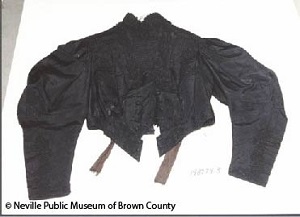From the Education Department: National Fragrance Day
Perfumes and fragrances have been culturally significant for millennia to get us where we are today: celebrating national fragrance day.
The first record of perfume dates back to the second millennium BC in Mesopotamia when it was invented by a chemist named Tapputi. In Ancient Egypt, perfume was a staple used to flash one’s wealth as it could only be accessed by the wealthy. Because of its significance, the Egyptians had a god of perfume, Nefertem. He was often depicted with water lilies, which were commonly used in perfume. Queens held perfume dear, not only using it to create a pleasant aroma, but they would also be entombed with a bottle. While Egypt and many other ancient nations saw perfume as a symbol of wealth, the Ancient Chinese would incorporate it into their daily lives, scenting their ink, stationary, homes, and places of worship. They also would use it for disinfection and purity, believing that it could rid a room of disease although it was primarily used simply for its scent.
The Ancient Chinese was not the only society that emphasized the use of perfume for healing processes; in Medieval Europe, doctors would wear bird-like masks stuffed with herbs, spices, and oils to prevent themselves from getting ill. Because of poor hygiene and living conditions, Medieval Europe smelt rancid, and it was thought that breathing in the “bad air” was how the plague spread. Nutmeg was one of the most used scents, and modern science has found that it could have saved people from contracting the plague but in a very different way than thought of. Fleas appear to dislike nutmeg, so it is possible that the scent could have saved some people from getting the disease.
During the period of European exploration, explorers would take spices and plants from all over the world and return them home to be used in their own perfumes. When the scents were brought back to Europe, the kings and queens would cherish them dearly, and it began to be commonplace for royalty in Europe to treasure their scent. 18th century France took the royal love of perfume to a whole new level.
King Louis XIV was most known for his love of perfume, being nicknamed “The Sweetest Smelling King of All” (despite only having bathed three times in his life). The Palace of Versailles was filled with flower petals and furniture sprayed with perfume. Even guests were sprayed with perfume upon entering the palace, and Louis’ most favored guests had their own signature scents that they would manage the creation of. Louis himself insisted that all his shirts be perfumed with a scent called “Aqua Angeli”, so servants used it to rinse his shirts. Despite his love of fragrance for his whole life, in his later years, he could only tolerate the scent of oranges, After Louis XIV had passed, Marie Antoinette carried on his legacy in her own love of perfume. She hired perfumer Jean-Louis Fargeon to create perfumes just as lavish as she was. Despite having initially supported the revolution, Fargeon remained loyal to the queen until her execution in 1793.
The 1920s brought about the modernization of perfume with the creation of Chanel. Gabrielle Chanel wanted to create a scent for woman that embodied modern femininity. Russian chemist, Ernest Beaux, was willing to help Chanel create the signature scent she was after. He created ten samples, and she liked number 5 the best. Its soapy smell reminded her of her childhood since her mother was a laundress. With its touch of familiarity along with its modernity, it was exactly the scent that Chanel was after. Women around the world instantly loved it, and to this day, it is the most popular fragrance around the world.



Comments
Post a Comment